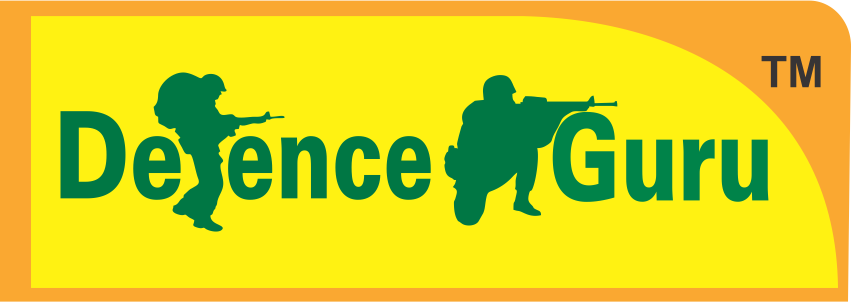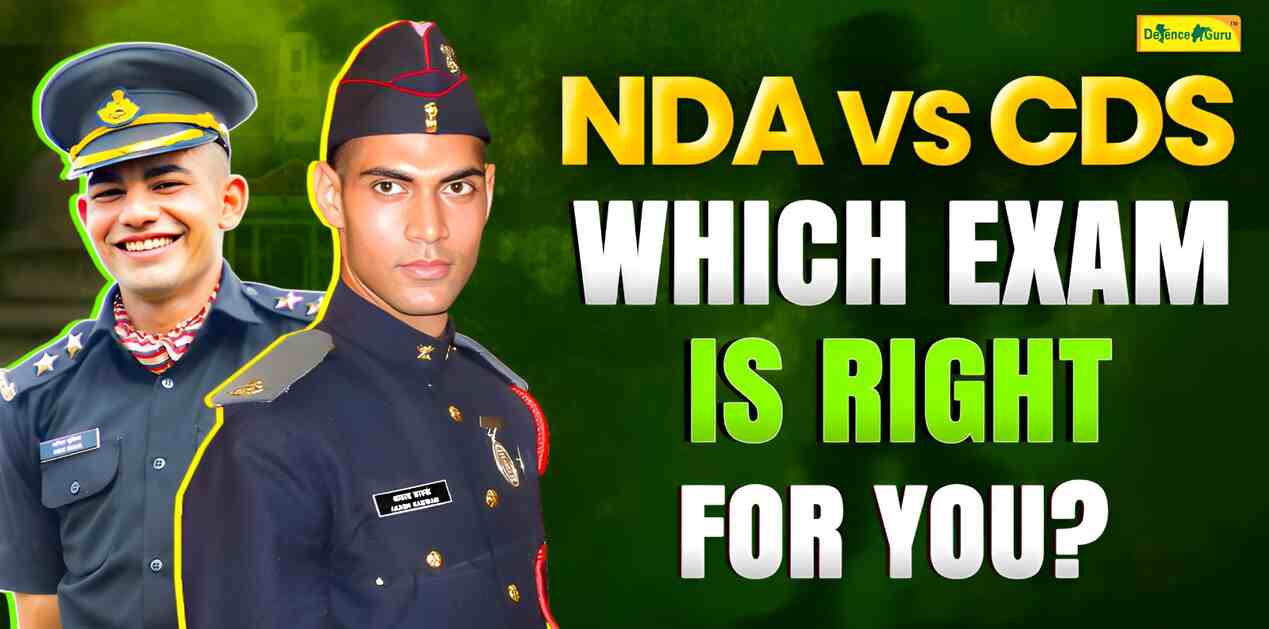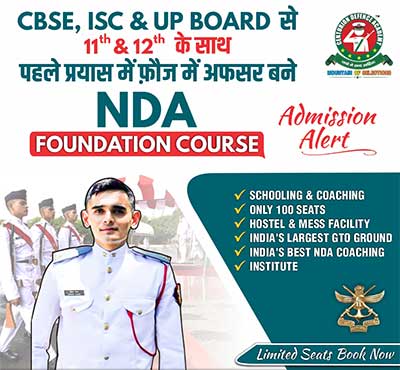NDA VS. CDS: KEY DIFFERENCES & ELIGIBILITY CRITERIA
While both NDA and CDS serve the common goal of recruiting candidates for the Indian Armed Forces, they differ significantly in terms of eligibility, exam pattern, training, and service allocation.
One of the primary distinctions lies in eligibility criteria. NDA is open to candidates who have completed their 10+2 education, whereas CDS requires applicants to be graduates. Additionally, those aspiring for the Air Force or Navy through either NDA or CDS must have studied mathematics and physics at the 10+2 level.
Clearing the NDA or CDS exam is essential for joining the Indian Army, Navy, or Air Force. This comprehensive guide will help you understand the differences between NDA and CDS, making it easier to choose the right path for your career in defense.
NDA VS. CDS: A COMPREHENSIVE COMPARISON
Both NDA and CDS offer excellent opportunities for defense aspirants, but they also have key differences. Understanding these distinctions is crucial for making an informed decision about which exam aligns best with your career goals.
Below, we provide a detailed comparison of NDA and CDS, covering eligibility, exam patterns, and career prospects. By the end of this guide, you’ll gain insights into which exam offers better opportunities based on your aspirations.
NDA VS. CDS: EXAM PATTERN
The exam pattern for NDA and CDS differs in several aspects. Here’s a breakdown of the key differences to help candidates choose the right path.
|
SUBJECTS COVERED |
English, General Knowledge, and Elementary Mathematics for IMA, AFA, and INA English and General Knowledge for OTA |
General Ability Test (GAT) and Mathematics |
|
TOTAL NUMBER OF PAPERS |
Three papers for INA, AFA, and IMA Two Papers for OTA
|
Two papers |
|
DURATION OF THE EXAMS |
Each exam is of two hours |
2 papers |
|
NUMBER OF QUESTIONS |
Math: 100 English: 120 General Knowledge: 120
|
GAT: 150 Mathematics: 120
|
|
TOTAL MARKS |
IMA, INA, and AFA: 300 OTA: 200
|
Written Exam: 900 SSB Interview: 900
|
|
|
The SSB Interview for IMA, INA, AFA is 300 marks each; for OTA, it's 200 |
|
|
NEGATIVE MARKING |
0.33 for every wrong answer |
GAT: 1.33 for every wrong answer Mathematics: 0.83 for every wrong answer
|
|
DIFFICULTY LEVEL OF SYLLABUS |
Elementary Mathematics for CDS is Class 10 level; other subjects are at the Graduation level |
Syllabus is equivalent to Classes 10-12 |
NDA VS. CDS: ELIGIBILITY CRITERIA & SYLLABUS OVERVIEW
Understanding the eligibility requirements for NDA and CDS is essential for aspirants looking to join the Indian Armed Forces. Below is a detailed breakdown of the age, gender, and educational qualifications required for both exams.
ELIGIBILITY CRITERIA FOR NDA & CDS
Age Eligibility:
- NDA 2: Candidates (both male and female) must be born between January 2, 2002, and January 1, 2005.
- NDA 1: Candidates (both male and female) must be born between July 2, 2003, and July 1, 2006.
- CDS: Candidates must be between 19 to 25 years of age.
Gender Eligibility:
- Both men and women can apply for NDA and CDS.
Educational Qualification:
- Army Wing (NDA): Candidates must have passed Class 12 or an equivalent examination from a recognized board.
- Air Force & Naval Wings (NDA): Candidates must have passed Class 12 or equivalent with Physics, Chemistry, and Mathematics.
- CDS: A graduation degree is required to apply.
NDA VS. CDS: SYLLABUS
The syllabus for NDA and CDS exams covers multiple subjects. Below is a complete breakdown of the topics included in both exams to help aspirants prepare effectively.
|
PARTICULARS |
NDA EXAM |
CDS EXAM |
|
SYLLABUS |
Mathematics and General Ability Test (GAT) Subjects include English, General Knowledge, Physics, Chemistry, and Current Affairs
|
English, General Knowledge, and Elementary Mathematics |
|
DIFFICULTY |
The mathematics section can be challenging, requiring a strong understanding of mathematical concepts |
The mathematics section is relatively higher in difficulty compared to the NDA |
NDA VS. CDS: TRAINING, TRAINING CENTRES & DEGREES AWARDED
Both NDA and CDS offer rigorous training programs that prepare candidates for distinguished careers in the Indian Armed Forces. However, the training duration, centres, and degrees awarded differ significantly. Here’s a detailed comparison:
TRAINING DURATION
NDA Training:
- The training lasts 4 to 4.5 years.
- Army Cadets: 3 years at the National Defence Academy (NDA), Pune, followed by 1 year at the Indian Military Academy (IMA), Dehradun.
- Naval Cadets: 3 years at NDA and 1 year at the Indian Naval Academy, Ezhimala.
- Air Force Cadets: 3 years at NDA and 1.5 years at the Indian Air Force Academy (AFA), Hyderabad.
CDS Training:
- The training duration varies based on the service branch:
- Indian Military Academy (IMA): 18 months
- Indian Naval Academy: 37 to 40 months
- Indian Air Force Academy (AFA): 74 months
TRAINING CENTRES
NDA Training Centres:
- National Defence Academy (NDA), Khadakwasla, Pune
- Indian Military Academy (IMA), Dehradun
- Indian Naval Academy, Ezhimala
- Indian Air Force Academy (AFA), Hyderabad
CDS Training Centres:
- Indian Military Academy (IMA), Dehradun
- Indian Naval Academy, Ezhimala
- Indian Air Force Academy (AFA), Hyderabad
- Officers Training Academy (OTA), Chennai
DEGREES AWARDED
NDA Cadets:
- Army Cadets: B.Sc., B.Sc. (Computer Science), BA, or B.Tech
- Naval Cadets: B.Tech
- Air Force Cadets: B.Tech
CDS Cadets:
- Army Cadets at IMA: Post Graduate Diploma in Military and Defence Management
- Cadets at OTA Chennai: Post Graduate Diploma in Defence Management and Strategic Studies
NDA VS. CDS: SALARY & PROMOTION OPPORTUNITIES
The salary structure and career progression differ for officers selected through NDA and CDS. Below, we provide an in-depth comparison of pay scales and promotional avenues.
|
RANKS |
PROMOTION AVENUES AND SALARIES OF NDA |
PROMOTIONAL AVENUES AND SALARIES OF CDS |
||
|
|
PROMOTION |
SALARY |
PROMOTION |
SALARY |
|
LIEUTENANT |
On Commission |
56,100 -1,77,500 |
On Commission |
56,100 -1,77,500 |
|
CAPTAIN |
02 years |
61,300- 1,93,900 |
02 years |
61,300- 1,93,900 |
|
MAJOR |
06 years |
69,400 – 2,07,200 |
06 years |
69,400 – 2,07,200 |
|
LIEUTENANT COLONEL |
13 years |
1,21,200 – 2,12,400 |
13 years |
1,21,200 – 2,12,400 |
|
COLONEL[SELECTION] |
15 years |
1,30,600-2, 15,900 |
15 years |
1,30,600-2, 15,900 |
|
COLONEL[TIME AND SCALE] |
26 years |
1,39,600-2,17,600 |
26 years |
1,39,600-2,17,600 |
|
BRIGADIER |
On Selection |
1,44,200-2,18,200 |
23 years |
1,44,200-2,18,200 |
|
MAJOR GENERAL |
On Selection |
1, 82, 200-2,24,100 |
25 years |
1, 82, 200-2,24,100 |
|
LIEUTENANT GENERAL |
On Selection |
2,25,000 (fixed) |
28 years |
2,25,000 (fixed) |
|
GENERAL |
On Selection |
2,50,000 (fixed) |
No restrictions |
2,50,000 (fixed) |
NDA VS. CDS: WHICH ONE OFFERS BETTER OPPORTUNITIES?
Choosing between NDA and CDS depends on various factors, including eligibility, competition level, syllabus difficulty, and training duration. Based on the aspects discussed earlier, candidates can determine which exam aligns best with their career goals.
KEY FACTORS TO CONSIDER:
- Educational Qualification: If you have completed 10+2 and meet the eligibility criteria, NDA could be a better option as it allows early entry into the armed forces.
- Exam Difficulty: Aspirants with a strong foundation in Mathematics and a preference for a structured syllabus may find NDA more manageable. On the other hand, candidates proficient in English and General Knowledge might perform better in the CDS exam.
- Competition Level: Since CDS is open to graduates, the competition may be relatively lower than NDA, making it a viable option for those seeking better chances of selection.
- Age Limit: NDA has a strict age limit, and candidates must appear for the exam right after their 10+2. If you fall within this bracket, NDA could be more convenient.
- Training Duration: If you prefer a shorter training period, CDS might be the better choice, as NDA requires 4 to 4.5 years of training, whereas CDS training durations vary by branch but are generally shorter.
Both NDA and CDS offer prestigious opportunities to serve in the Indian Armed Forces. The best choice depends on your educational background, strengths, and career preferences.
Read more:-
100 Most Expected GK / GS Questions with Answers for NDA/CDS-2025


.jpg)





0 Comments